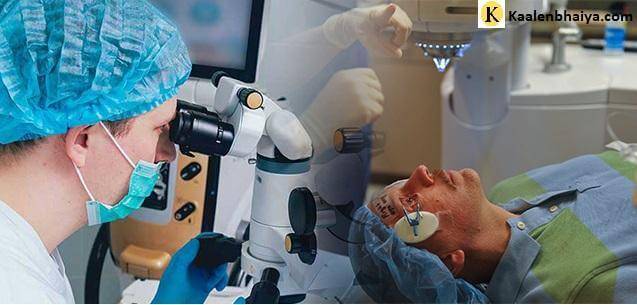|
Getting your Trinity Audio player ready...
|
The cornea is regarded as the clear front window of the eye. It helps focus the light rays into the eye so that an individual can have a clear vision. The cornea is composed of different layers of cells. These layers work collectively to protect the cornea & provide a crystal clear vision.
A prosthetic or artificial cornea is also known as a keratoprosthesis. Both the donors & artificial corneal transplantations involve the eradication of the diseased & opaque recipient cornea (or the previously failed cornea) & its replacement with another donor or prosthetic cornea. In 2021, the entire valuation of the Global Artificial Cornea & Corneal Implant market was USD 420.63 million. It is predicted to reach USD 825.13 million by 2030, projecting a CAGR of 6.97 % throughout 2020-2030.
‘North America’ has the largest share of around 61.23% of the market by region. The reason can primarily be attributed to its highly developed healthcare infrastructure, diverse presence of corneal implant manufacturers, and increased acceptance of sophisticated medical technologies.
Furthermore, due to the large population base, increased patient awareness of eye care, and continuous rising in disposable income, the Asia-Pacific region is predicted to grow at the fastest rate over the forecasted period.
The top 3 techniques that can change the entire market outlook in future are as follows:
a.) Endothelial Keratoplasty
In some eye conditions, the innermost layer of the cornea known as “endothelium” is damaged, which leads to cornea swelling, thus affecting an individual’s vision. Endothelial keratoplasty is regarded as surgery to replace this particular layer of the cornea along with healthy donor tissue. It is generally called a partial transplant because this inner layer of the tissue only gets replaced. The National Library of Medicine, after taking a survey over the past five years, it was discovered that the overall graft survival rate was 66%. This was again subdivided into 98% for keratoconus, 85% for Fuchs’ dystrophy, 86% for viral keratitis, 55% for regrafts, & 84% for pseudophakic bullous keratopathy, & 57% for other diagnoses.
There are two types of endothelial keratoplasty known as DSEK (Descemet’s Stripping (Automated) Endothelial Keratoplasty) & DMEK (Descemet’s Membrane Endothelial Keratoplasty).
Each type eradicates the damaged cells from the inner layer of the cornea, which is called known as the Descemet’s membrane. The damaged corneal layer is then removed by means of a small incision. After that, the new tissue is put in place, but a major part of the cornea is left as it is. This accurately lowers the risk of having the new cornea cells getting rejected after the surge.
b.) Corneal Transplant with Full Thickness
An entire cornea will need to get replaced if both the inner & front corneal layers are damaged. This is called a full-thickness corneal transplant or penetrating keratoplasty (PK). By applying this technique, the diseased or damaged cornea is removed successfully. After that, the clear donor cornea is sewn into its own place.
However, PK has a longer duration of the recovery period as compared to the other types of corneal transplants. Getting a complete vision back after the conduction of PK can take up to one year or longer than that.
c.) Corneal Transplant with Partial Thickness
Sometimes the middle & front layers of the cornea get damaged to an extent. In this case, only those selected layers are removed. The endothelial layer, widely known as the thin back layer, is kept in place as it is. This transplant is generally called a partial thickness corneal transplant or deep anterior lamellar keratoplasty, which is commonly used for the treatment of keratoconus or bulging of the cornea. By using this method, there is also less risk of having the new cornea getting rejected.
CONCLUSION
The overall demand for these three techniques is continuously rising. Eye surgeons from all across the globe are sheer focusing on these methods, and it is expected that in the near future, these adopted methods will change the entire market scenario by 360-degree. According to JAMA Ophthalmology, each year, nearly 1,85,000 corneal transplantations are performed across 116 countries & 2,84,000 artificial corneas are manufactured in around 82 countries across the globe.
Frequently Asked Questions FAQs:
What is Cornea?
The cornea is regarded as the clear front window of the eye. It helps focus the light rays into the eye so that an individual can have a clear vision. The cornea is composed of different layers of cells. These layers work collectively to protect the cornea & provide a crystal clear vision.
The top 3 techniques that can change the entire market outlook in the future are as follows:
1. Endothelial Keratoplasty
2. Corneal Transplant with Full Thickness
3. Corneal Transplant with Partial Thickness
In 2021, the entire valuation of the Global Artificial Cornea & Corneal Implant market was USD 420.63 million. It is predicted to reach USD 825.13 million by 2030, projecting a CAGR of 6.97 % throughout 2020-2030.
‘North America’ has the largest share of around 61.23% of the market by region. The reason can primarily be attributed to its highly developed healthcare infrastructure, diverse presence of corneal implant manufacturers, and increased acceptance of sophisticated medical technologies.


